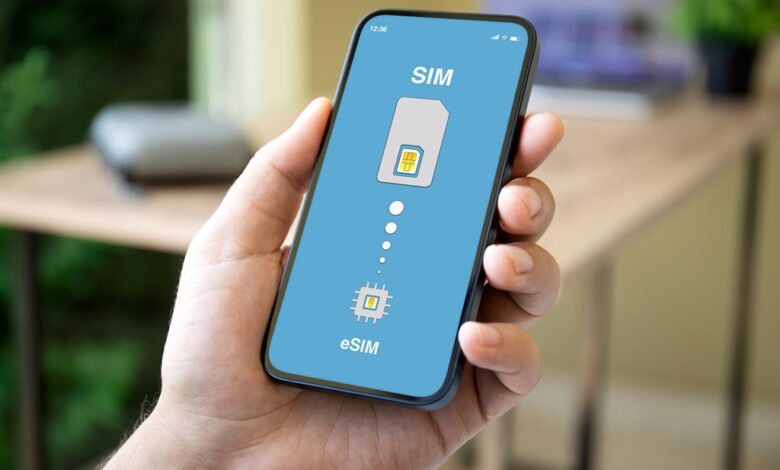How to Stay Connected When Traveling Abroad: A Guide to eSIM Comparison

Traveling abroad is an exciting venture, filled with new experiences, cultures, and places to explore. However, staying connected during your travels can be challenging. Whether it’s navigating unfamiliar streets, staying in touch with loved ones, or sharing your adventures on social media, a reliable internet connection is essential. One of the most efficient ways to maintain connectivity while traveling is through an eSIM. In this article, we will explore how eSIMs work, their benefits, and how to compare eSIM plans to ensure you stay connected seamlessly during your travels.
Understanding eSIM Technology
An eSIM, or embedded SIM, is a digital SIM card that is built into your device. Unlike traditional SIM cards that require physical insertion into your phone, eSIMs are activated through software. This technology allows for greater flexibility, as you can switch between carriers and plans without needing to physically change SIM cards.
Key Benefits of eSIMs
- Convenience: With an eSIM, you can activate a new plan without having to visit a store or wait for a physical SIM card to be delivered. This is particularly useful when traveling abroad, as you can switch to a local carrier’s plan as soon as you arrive at your destination.
- Multiple Profiles: eSIMs support multiple profiles, meaning you can have different plans for different countries or regions stored on your device. This eliminates the need to carry multiple SIM cards and constantly swap them out.
- Space Saving: Since eSIMs are built into the device, they save space that would otherwise be used by a SIM card slot. This can contribute to slimmer device designs and potentially better battery life.
- Environmentally Friendly: By reducing the need for physical SIM cards, eSIMs contribute to less plastic waste, making them a more sustainable choice.
Comparing eSIM Plans: What to Look For
When it comes to choosing the right eSIM plan for your travels, several factors should be considered to ensure you get the best deal and the most reliable service. Here are some key aspects to compare:
1. Coverage
The most crucial factor is coverage. Make sure the eSIM provider you choose offers robust coverage in the countries you plan to visit. Check the network quality and availability in those regions to avoid any connectivity issues.
2. Data Allowance
Data needs can vary greatly depending on your usage habits. Some travelers may require only minimal data for occasional browsing and messaging, while others may need substantial data for streaming, video calls, and constant social media updates. Evaluate your data needs and choose a plan that offers sufficient data allowance.
3. Cost
Traveling can be expensive, so it’s important to find an eSIM plan that fits within your budget. Compare the cost of different plans, keeping in mind that the cheapest option may not always provide the best value. Look for plans that offer a good balance of price and features.
4. Flexibility
Flexibility in terms of duration and data allocation is another important consideration. Some eSIM plans are available on a daily, weekly, or monthly basis. Choose a plan that matches the length of your trip and allows for easy adjustments if your travel plans change.
5. Additional Features
Some eSIM providers offer additional features such as unlimited data, free access to certain apps, or discounted rates for multiple countries. These features can add significant value to your plan, so be sure to compare them as well.
How to Activate Your eSIM
Activating an eSIM is generally straightforward. Here’s a step-by-step guide:
- Check Compatibility: Ensure your device supports eSIM technology. Most modern smartphones, such as the latest iPhones and Android devices, come with eSIM capabilities.
- Choose a Plan: Visit a reliable eSIM provider like Simbud and browse their available plans. Compare the plans based on the factors mentioned above.
- Purchase and Download: Once you’ve selected a plan, purchase it and download the eSIM profile. This usually involves scanning a QR code provided by the carrier.
- Activate the eSIM: Follow the on-screen instructions to activate the eSIM on your device. This process typically involves entering an activation code and confirming the setup.
- Configure Settings: After activation, configure your device settings to prioritize the eSIM for data usage, especially if you have a physical SIM card installed as well.
Top eSIM Providers to Consider
Here are some top eSIM providers that offer competitive plans for international travelers:
1. Airalo
Airalo is known for its user-friendly platform and diverse range of plans. They offer eSIMs for numerous countries and regions, making it easy to find a plan that fits your itinerary.
2. Truphone
Truphone provides global eSIM plans with strong coverage and reliable connectivity. They offer plans with different data options and durations, catering to both short and long-term travelers.
3. GigSky
GigSky is another reputable provider that offers international eSIM plans. They have a variety of plans with competitive rates and extensive coverage, ensuring you stay connected wherever you go.
Conclusion
Staying connected while traveling abroad is no longer a challenge, thanks to the convenience and flexibility of eSIM technology. By understanding how eSIMs work and knowing what to look for in a plan, you can ensure a seamless and hassle-free experience. Whether you’re a frequent traveler or embarking on a once-in-a-lifetime trip, comparing eSIM plans and choosing the right one for your needs will keep you connected and enhance your travel experience. For a comprehensive eSIM comparison, visit Simbud and explore their wide range of travel-friendly plans.
Keep an eye for more news & updates on Techpromagazine!



